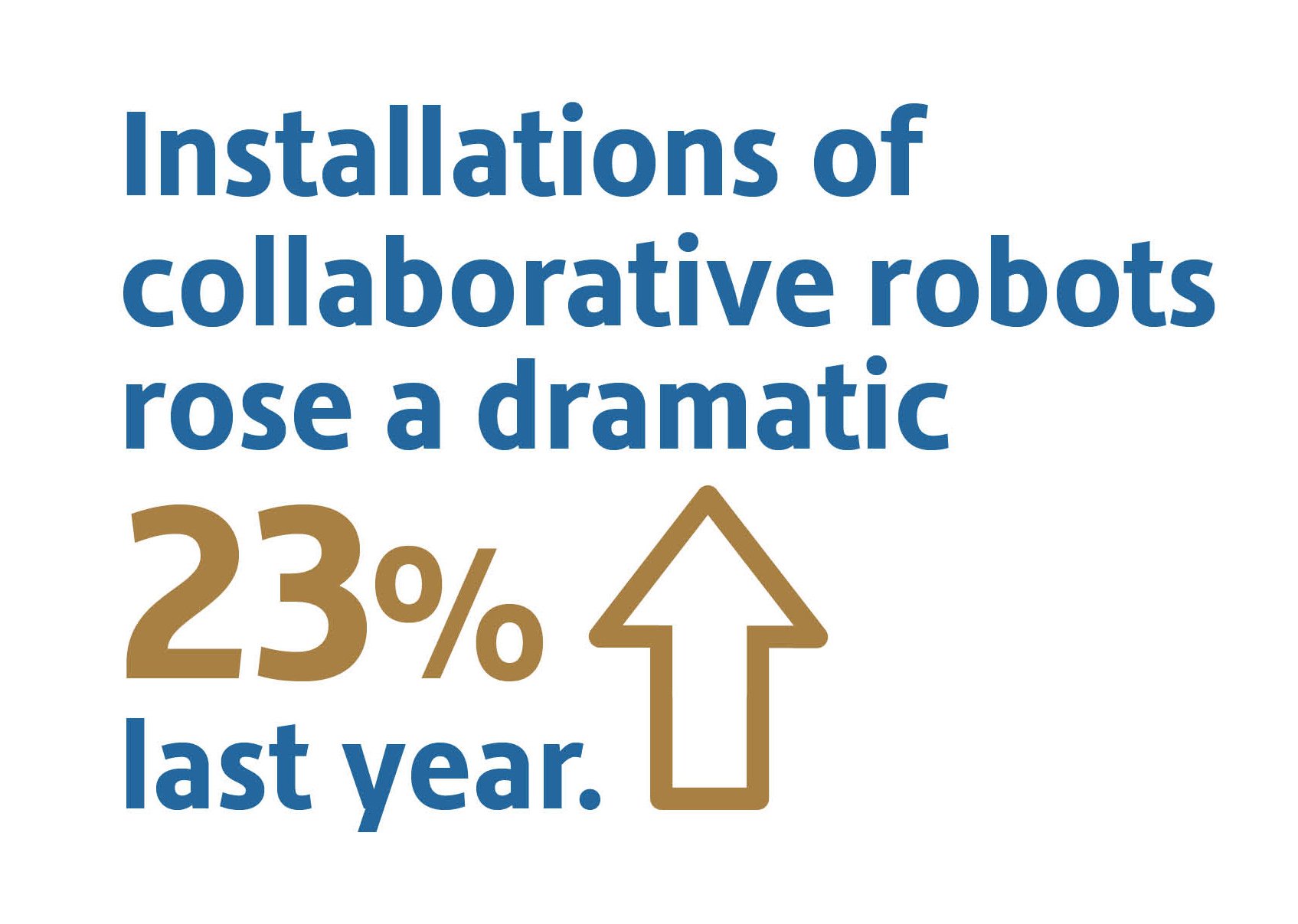Installations of collaborative robots (also known as cobots)—the cage-free robots that can work safely side-by-side with humans on the factory floor—rose a dramatic 23% last year, easily outpacing the wider robotics market, according to the World Robotics Report released in September.

Why it could matter
Historically, robots used in manufacturing have been physically separated from workers. Now, sensor-equipped cobots are showing they can work in close quarters with humans without causing workplace accidents. The user-friendly and increasingly affordable bots seem to offer the lure of productivity gains not just for large corporations, but also for medium and small manufacturers.
Details
-
About 14,000 cobots were installed worldwide in 2018 according to the International Federation of Robotics. That’s still a small number—just 3% of all industrial robots installed—but their increasing capacity and falling prices hint that the market is just getting started.
-
In September of this year, at demonstrations in Shanghai and Las Vegas, a cobotics leader, Universal Robots, showed off a new unit that can lift 35-pound payloads.
-
Robotics used to require significant capital investment and programming skills. But many cobots cost now less than $40,000 and can be taught to perform new tasks just by moving their arms. Said another way, the ease of programming makes cobots accessible in a way that adding windows interfaces did to PCs in the early days of personal computing.
-
Universal Robots notes that it has more than 37,000 cobots installed around the world and that their cobots are able to perform impressive and valuable tasks, from picking randomly placed food items off an assembly line to filling backpacks for hungry children. They also project the capability of alleviating a projected shortage of 400,000 welders by the year 2024.
-
From ZDNet: “Collaborative automation has, in just the last decade, changed how a variety of light industry sectors operate, including components manufacturing, various kinds of scientific benchwork, and light manufacturing of products as disparate as eyeglasses and soft goods.”
-
As The Wall Street Journal recently reported, cobots “that use camera, lasers and sensors to navigate warehouse aisles” are a new kind of “surge” workforce, especially in this tight labor market. Only 3% of warehouses globally used commercial robots in 2018, but that’s changing. Market advisory firm ABI Research estimates 28% of global warehouses will have robots operational by 2025.

Atalaya's take
Atalaya has seen technology transform industries like healthcare, telecom, construction and retail. We’ve partnered with businesses and enabled them to invest in innovative strategies to survive – and thrive – against competition and over the long term. Cobots – with the potential to revolutionize manufacturing via lower costs and safety – are just another case study in this innovation cycle. We recognize that with innovation comes hard-to-predict consequences, and we will continue to ask questions and learn – how could this affect jobs in manufacturing? How will regulators act in response to these changes and monitor the industry? Will cobots truly be a safer solution, or do they introduce more uncertainty?
Looking forward, we get excited when we see innovative new ideas transforming industries. Our flexibility as a capital provider enables us to partner with companies that are thinking ahead, including “out of the box” assets that better position businesses to adapt and compete. Whether it is investing in robotics or delivering healthcare with new technologies, departures from convention don’t scare us. We like those that resist the status quo. To be sure, while we don’t know exactly how (or if) cobots will evolve as the next wave of technology transformation, our eyes and ears are open.
CONTACT US.